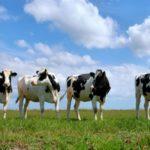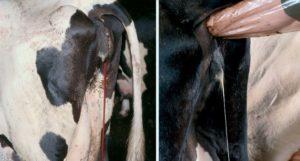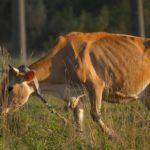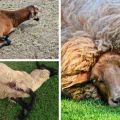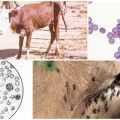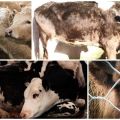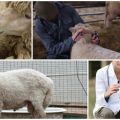The causative agent and symptoms of eimeriosis in cattle, treatment and prevention
Diseases of livestock are caused by viruses and bacteria, but the lion's share of pathologies appears as a result of exposure to parasites. Eymeriosis is caused by microscopic worms that lodge in the blood vessels of the cow's digestive system. Aymeriosis often affects cattle - this is a common disease and the cow owner should know how to treat the wet nurse.
General information about pathogens
The causative agents of the disease are protozoa with a complex development cycle. There are 20 main types of eimeria. Eimeria eggs, under favorable conditions, can infect another animal within 24 hours after emergence. Microscopic parasites enter the body of cattle and small ruminants with contaminated feed. As a rule, infection occurs from already sick cows.
Aymeria parasitize intracellularly, throughout the entire gastrointestinal tract. Calves often get sick with emeriosis, due to the body's susceptibility to infection and a weak immune system. Parasites can colonize bedding, food and water, so if a pathogen is found on the farm, you will have to carry out the strictest disinfection and quarantine for 1 month.
Symptoms of defeat
Aymeriosis is secretive for 2-3 weeks. The first signs of the disease are an increase in temperature, refusal of water and feed. The mucous membranes are pale, typical symptoms of anemia appear - in the clinical analysis of blood, a small number of red blood cells and hemoglobin can be found. After about 2-3 days, severe diarrhea with blood impurities begins. If treatment for eimeriosis is not started in time, calves die from dehydration.
There is also a chronic course of the disease. In this case, young growth lags behind in development, suffers from constant gas, colic and constipation. The feces are offensive and thin. Weight gains less than healthy peers. Typical punctate hemorrhages can be seen on the mucous membranes. The mortality rate of chronic eimeriosis is 50%.
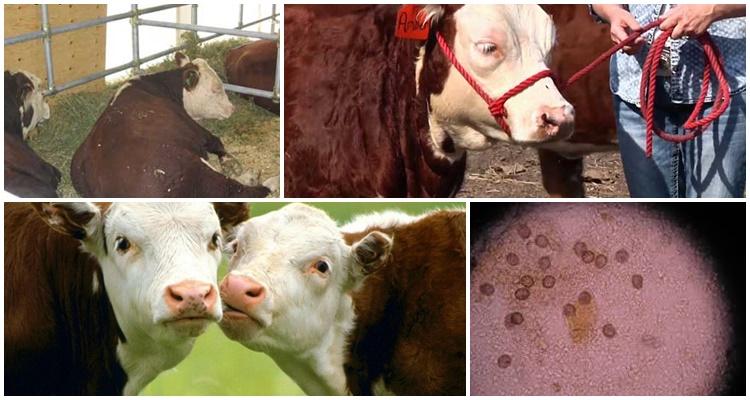
Diagnosis of the disease
Diagnosis of the disease includes observation of clinical and epizootic signs. In addition, Fulleborn and Darling tests are carried out, which help to identify worm eggs in the feces. A complete blood count will additionally confirm the presence of anemia and changes in the biochemical parameters of the blood.
Some cows show single eggs and fecal spores. Such animals are considered carriers of the disease.
The dead animals are opened and the intestinal mucous membranes are examined. On the surface, you can see characteristic hemorrhages and inflammation.Instead of normal feces, a white or green curd is present inside the intestines.
A bacteriological study is carried out to distinguish the disease from pasteurellosis and salmonellosis, which are very similar in symptoms. Immunological reactions, including PCR, are often used. The combination of these signs makes it possible to suspect eimeriosis in the livestock.
How to treat the appearance of parasites
Against eimeriosis of calves and adults, drugs that are derivatives of "Amprolium" are effective. Before using the drug, you need to test for the sensitivity of parasites to the active substance. Below is their comparative characteristics.
| A drug | Advantages | disadvantages |
| "Amprolmix" | Can be used for different animals, including poultry. | Does not combine with anthelmintic drugs. Do not give to animals intended for "repair" livestock. |
| "Amprolvet" | Violates the carbohydrate metabolism of microscopic worms, leading to the rapid death of the parasite. | Should not be given to lactating and pregnant cows. |
| "Brovitakoccid" | It affects not only the causative agents of eimeriosis, but also schizogony. | Slaughter for meat is allowed only after 2 weeks. |
| "Amprol" | A wide spectrum of action on endoparasites. | The substance is removed from the body for 14 days and can be stored in the meat of the animal. |
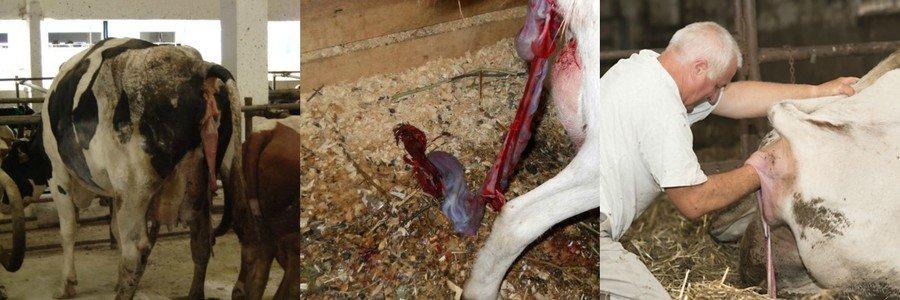
The animals are drunk tablets for eimeriosis dissolved in water. The average calculation of drugs is 10 mg per 1 kg of live weight. For adult animals, you can add the medicine to the feed. All of these drugs have contraindications. You need to familiarize yourself with them before starting the course of treatment. Only a doctor can prescribe adequate therapy. Self-activity leads to the death of the entire livestock.
Damage to the body
The causative agents of eimeriosis have a serious effect on the gastrointestinal tract. Young animals do not develop properly, lag behind healthy peers in development, therefore, the cost of feeding days increases, and the time of slaughter increases.
The intestinal surface of the animal is seriously affected by the effects of parasites. Due to the disease, nutrients are absorbed at times worse and are not absorbed properly. The risk of stomach and intestinal ulcers increases. Dairy cows lose milk yield, do not eat feed and lose weight. If treatment is not started on time, there is a great risk of death of the animal.
Prevention
New animals must be separated from the herd within 1 month after arrival. The barn is regularly disinfected from eimeriosis and other diseases, and manure and other waste, including feed and litter residues, must be disposed of outside the farm.
The livestock is regularly vaccinated with chemicals. Feeders and drinkers for animals are washed every day, rinsed with a disinfectant. Pastures should be checked for the presence of the parasite before grazing.
The wooden surfaces of the barn are covered with lime or ammonia solution. It is advisable to burn iron rods and chains on a fire. Manure from an infected barn must be disposed of and cannot be used as fertilizer.


